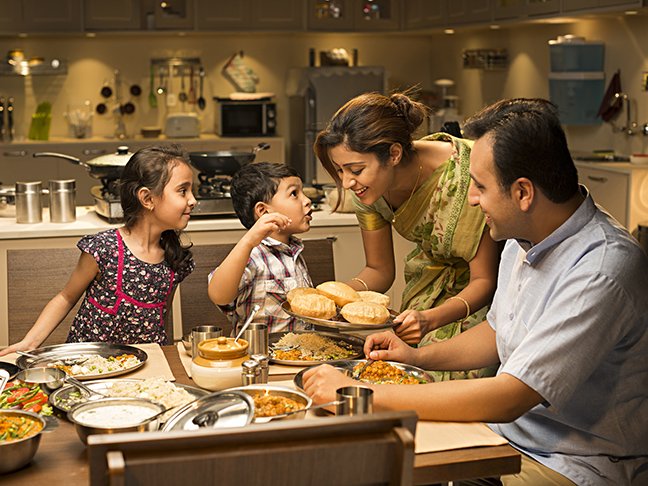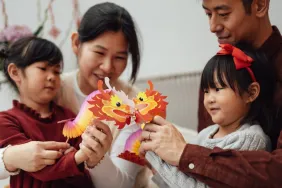I had a parenting freak-out recently about, of all things, family traditions. The anxiety attack started when my daughter’s school asked us to share our family traditions with the class. We were encouraged to think beyond major holidays and include more personal traditions, unique to our own family. Examples included weekly game nights or an annual scavenger hunt.
My mind was blank.
Sure, we watch fireworks on July 4th and eat turkey on Thanksgiving, but I struggled to recall anything quirky or special that we do on the regular.
Family traditions are important, right? They strengthen our bonds, underscore our values and help kids feel connected. In fact, in a 50-year research study, the American Psychological Association found that family rituals lead to healthier children with better academic performance. So how had I dropped the ball on creating family traditions? Was I failing as a parent because I’d never instituted Taco Tuesdays?
“Do you guys have family traditions?” I texted my oldest friends, whose kids range from toddler to teenager. It turns out, they did. One friend implemented a Sunday night dance party to help beat back-to-school blues. Another plans surprise family excursions as a way of encouraging everyone to try something new.
My college roommate Jenny, a big believer in the value of family dinner, likes to go around the table and find out each person’s high and low of the day. Some families call this table talk game “good thing/bad thing” or “pit and peak.” When Barack and Michelle Obama practiced it with Sasha and Malia, they dubbed it “roses and thorns.”
I could work with that.
The rose and thorn imagery immediately appealed to my fairy tale-loving 7-year-old daughter.
“So what was the rose of your day?” I asked her.
Not surprisingly, it was the cookie I put her in lunch.
“And the thorn?”
Well, that was a longer story.
Another girl had laughed at her when she’d answered a teacher’s question incorrectly. She’d felt embarrassed and wanted to disappear. I was so glad she told me. Without the thorn prompt, she might not have.
We kept going around the table, sharing our high points and low points from the day. I’m not sure my toddler completely understood the concept, but she did describe a scary dream about a spider.
Then it was my turn. I said the rose of my day was right now, having dinner with my girls, and it was true. But oh, the thorn. So many choices. I decided to confess: “This morning I got frustrated because we were late for school. I yelled when I should have used my words. I felt bad about it all day.” My 7-year-old’s eyes got so wide. Mommy makes mistakes—who knew?
Our first foray into roses and thorns resulted in one of the longest and most rewarding dinner table conversations I’ve ever had with my kids. I love how it kept them engaged around the table, eating and talking instead of squirming, blowing milk bubbles, and begging for TV. So we’ve kept going, exchanging our highs and lows, and I dare say, we have the start of a family tradition. I look forward to hosting our kids’ friends for dinner and including them in our new ritual.
Even if you’re the amazing mom who’s already nailed family traditions (maybe you dole out annual Christmas jammies or throw birthday parties for your pets), I encourage you to give roses and thorns a try around the dinner table. The roses remind us all to be grateful for what’s good in our lives. The thorns are a healthy way for kids to get whatever is bothering them off their chests, which can be a huge relief. Since everyone participates, everyone gets heard, even the smallest or quietest members of the family.
And as an added bonus, hearing our thorns, kids begin to realize that their parents are people too.
Photo: Getty








